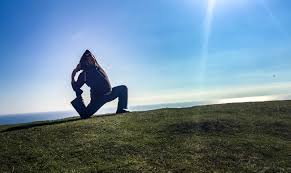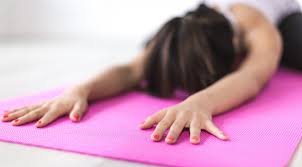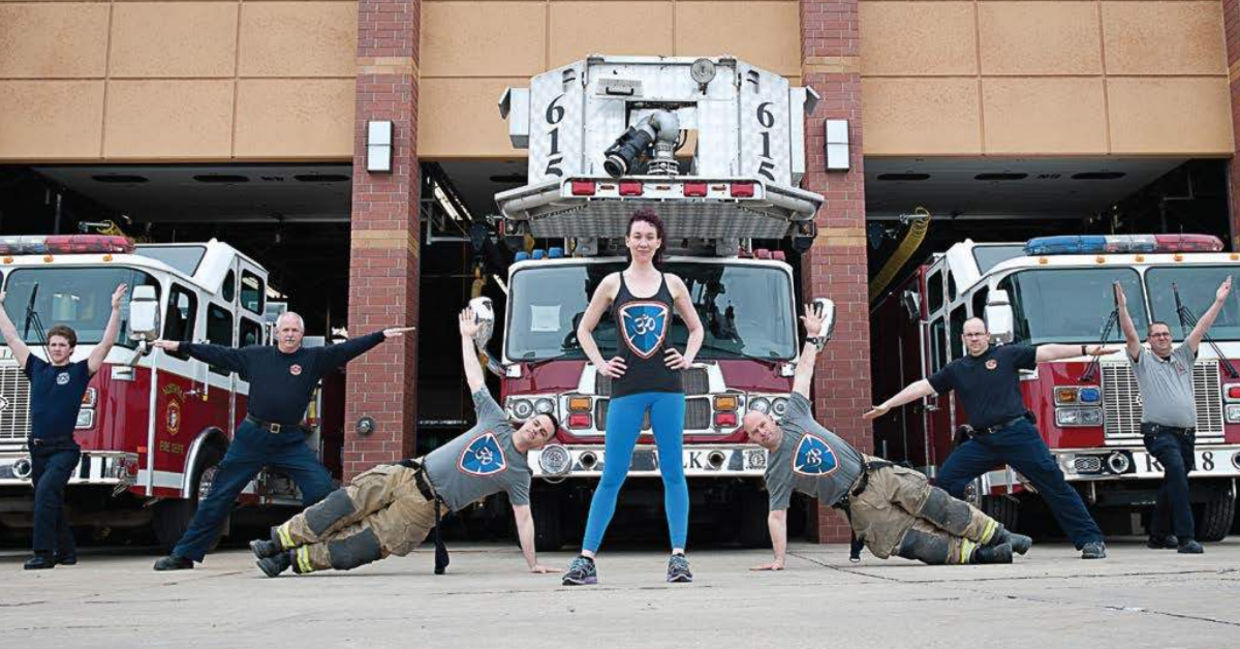In the middle of a prescription painkiller overdose crisis in the United States, a San Diego VA study finds that veterans with chronic pain would be well-served to put down the pills and pick up a yoga mat.
After six months of twice-a-week yoga sessions, San Diego veterans reported a significant drop in back pain — one of the signature complaints of a demographic that suffers higher rates of chronic pain than the general population.
Also, the number of patients in the study on opiate-based pain pills dropped from 20 per cent to 8 per cent. It’s a potentially important finding, as the U.S. Department of Veterans Affairs weans its members off of long-term addictive painkillers such as hydrocodone and fentanyl.
One of the study participants was Joe Sturdivant, a 52-year-old retired Marine.
After 22 years in uniform, and miles and miles of patrols carrying heavy packs, Sturdivant’s back was a mess.
Retired Marine Joe Sturdivant discusses the chronic back pain he had after 22 years in the military.
Retired Marine Joe Sturdivant discusses the chronic back pain he had after 22 years in the military. Nancee E. Lewis for the San Diego Union-Tribune
“In the Marine Corps, you learn to suck stuff up. So I just dealt with it,” he said. “I thought it would go away. But I guess it was more severe than I expected.”
One day, his back flared up, and Sturdivant had to drive himself to the emergency room — unable to even crawl out of his truck once he arrived. Orderlies had to come to collect him on a stretcher.
That experience pushed the tough Marine to become open to the yoga study last year.
“I thought yoga was for women,” he said. “I always see women with the yoga pants on.”
The San Diego study published last month in the American Journal of Preventative Medicine showed that the yoga-mat veterans also reported less fatigue and improved physical functioning.
The connection between yoga and the pill reduction is murky, in part because the San Diego researchers didn’t intend to study that factor when they got funding for the study six years ago.
The opiate overdose epidemic in the United States only emerged in the past few years.
Patients in the non-yoga control group also reduced their pill use, leading to the conclusion that people participating in the study were generally motivated to go off painkillers.
However, researchers see some hope because veterans reported a significant drop in pain despite decreased pill use.
Lead researcher Erik Groessl said his findings should open the door to more yoga being offered at the VA. He hopes his manual for a gentle, stretching-focused yoga regime is picked up nationally.
“Many physicians already believe in yoga and suggest it as one option for their patients. But we need to offer more classes, make it available to more people, and we’re working to do that nationally,” Groessl told The San Diego Union-Tribune.
“It might be available in a psychology clinic, or an inpatient substance-abuse clinic. But that doesn’t mean it’s open to back-pain patients or a broader group of patients,” said the VA researcher, who is also an associate adjunct professor at the University of California San Diego.
Other extensive studies in the civilian population have shown results with yoga for back pain. But the San Diego VA researchers wanted to see if the same holds for their patients — a mostly male, blue-collar group who might be a harder sell for yoga.
“The VA does serve more people who are in need. They have more chronic back pain and more severe back pain, as well as other health problems,” Groessl said. “We wanted to make sure we could recommend this as a treatment for our patients.”
The average age in the study was 53. Nearly one in five reported being homeless in the past five years. The average length of back pain was 15 years.
Sturdivant, who is a VA employee, admits he had some trepidation when he showed up for the first class.
“I didn’t know what to expect. I’m looking around like, these movements, these positions; I don’t have that kind of flexibility,” he said.
“I saw other guys there, so I said, if these guys can do it, I know I can do it. I accepted the challenge because I like challenges.”
The study included 150 San Diego veterans. Half did the yoga program immediately. Their pain ratings were compared to those who hadn’t yet started any yoga.
Groessl, the lead San Diego researcher, said he’d like to do next a longer-term study that follows veterans to see if they can keep up the yoga and if it continues to reduce pain.
“Some people stop and get out of the habit,” he said. “We definitely want to study that.”



